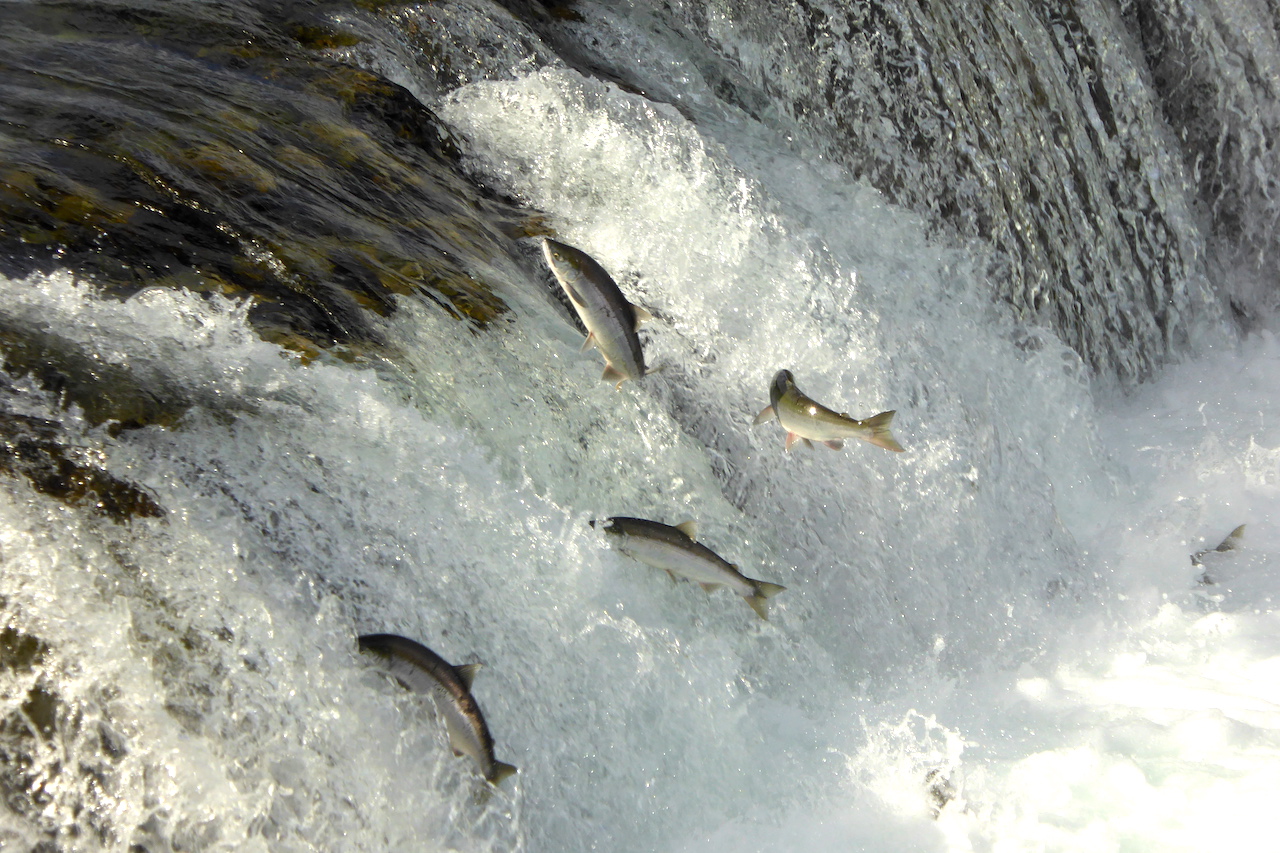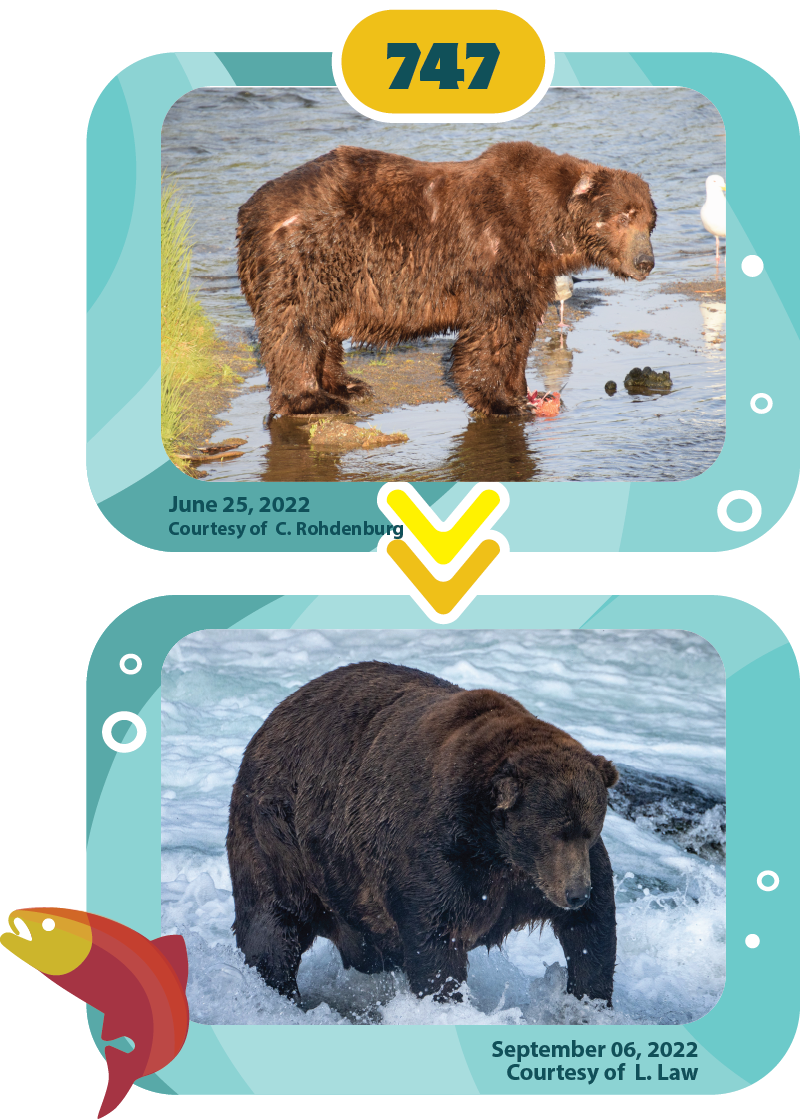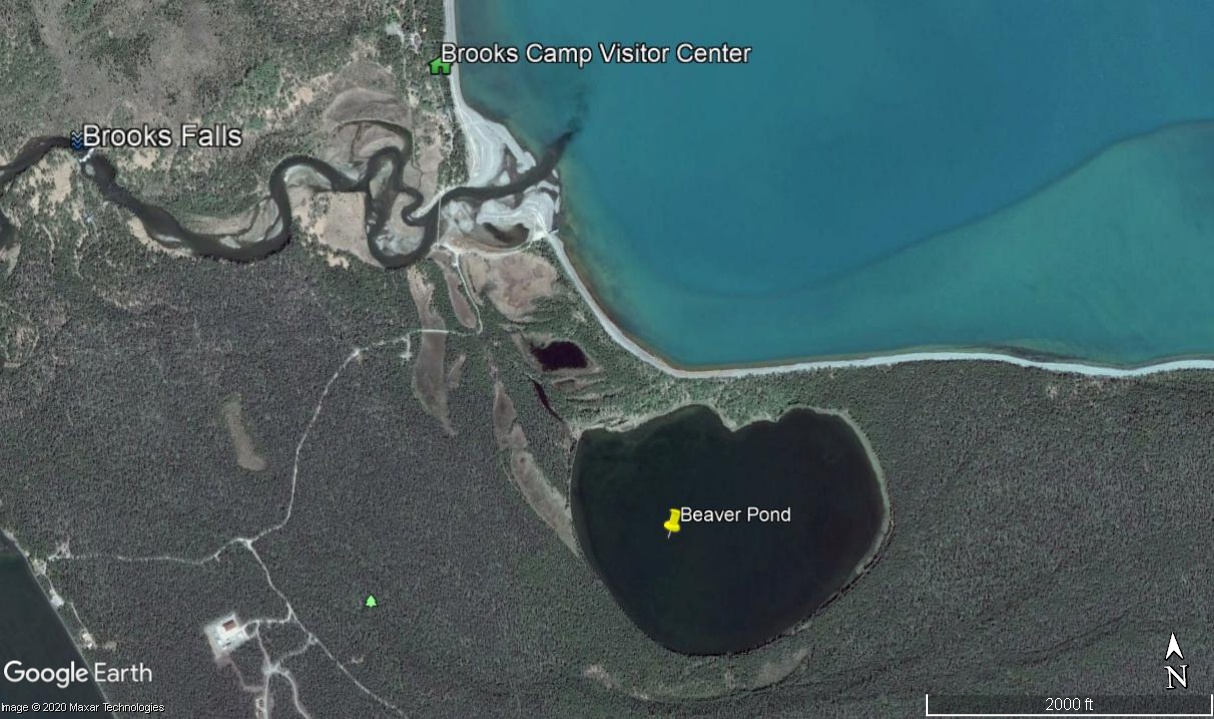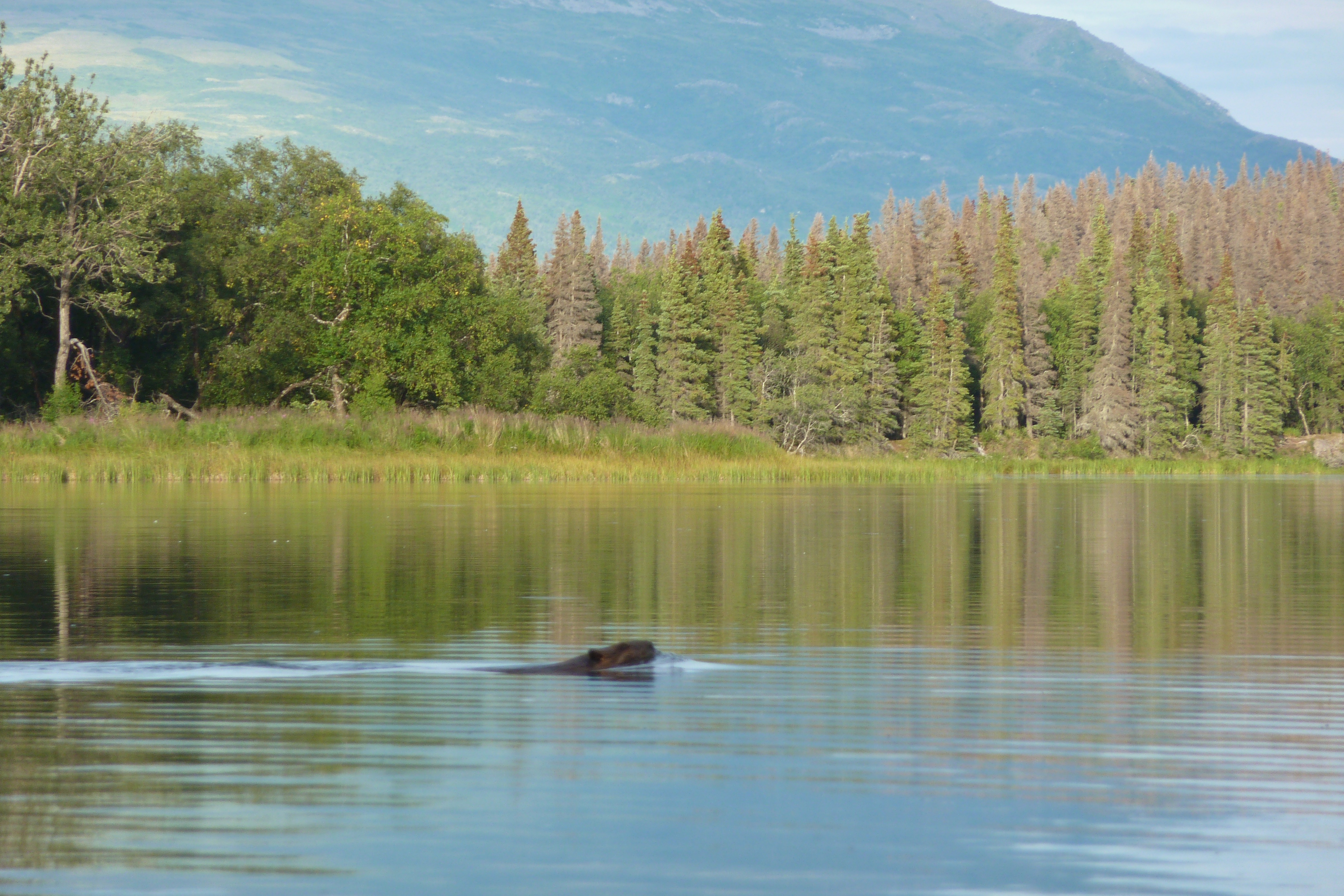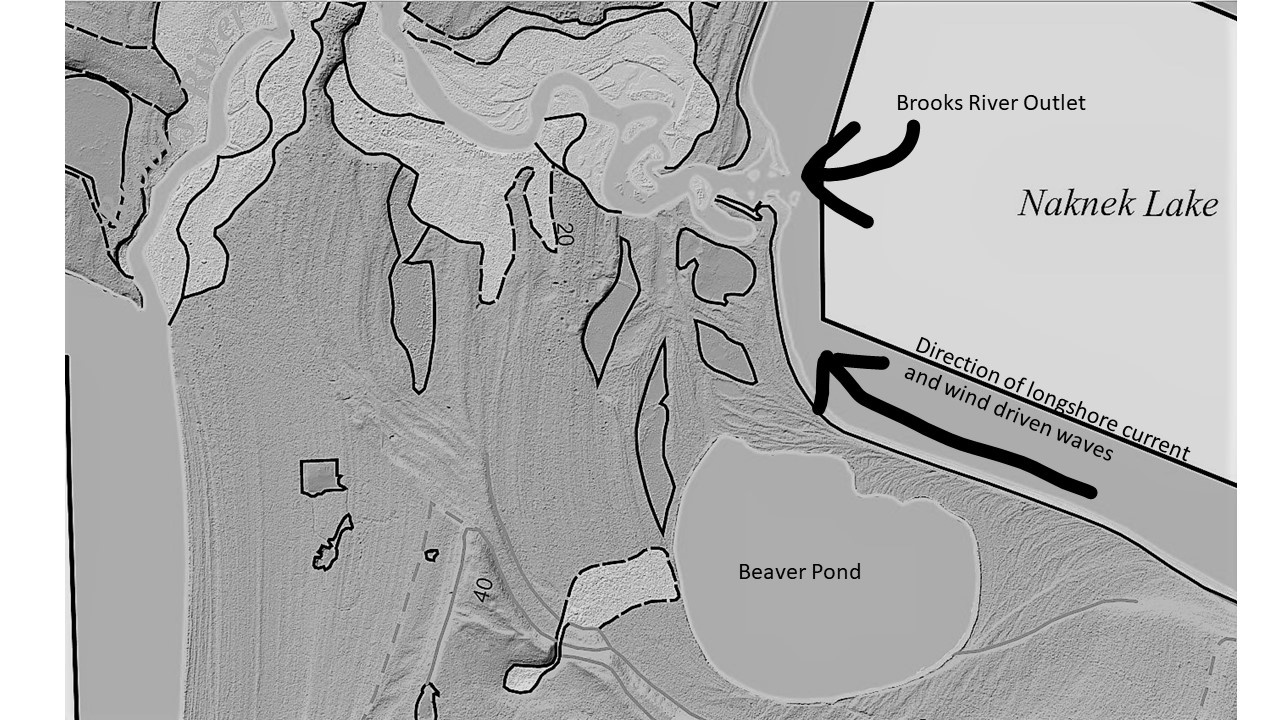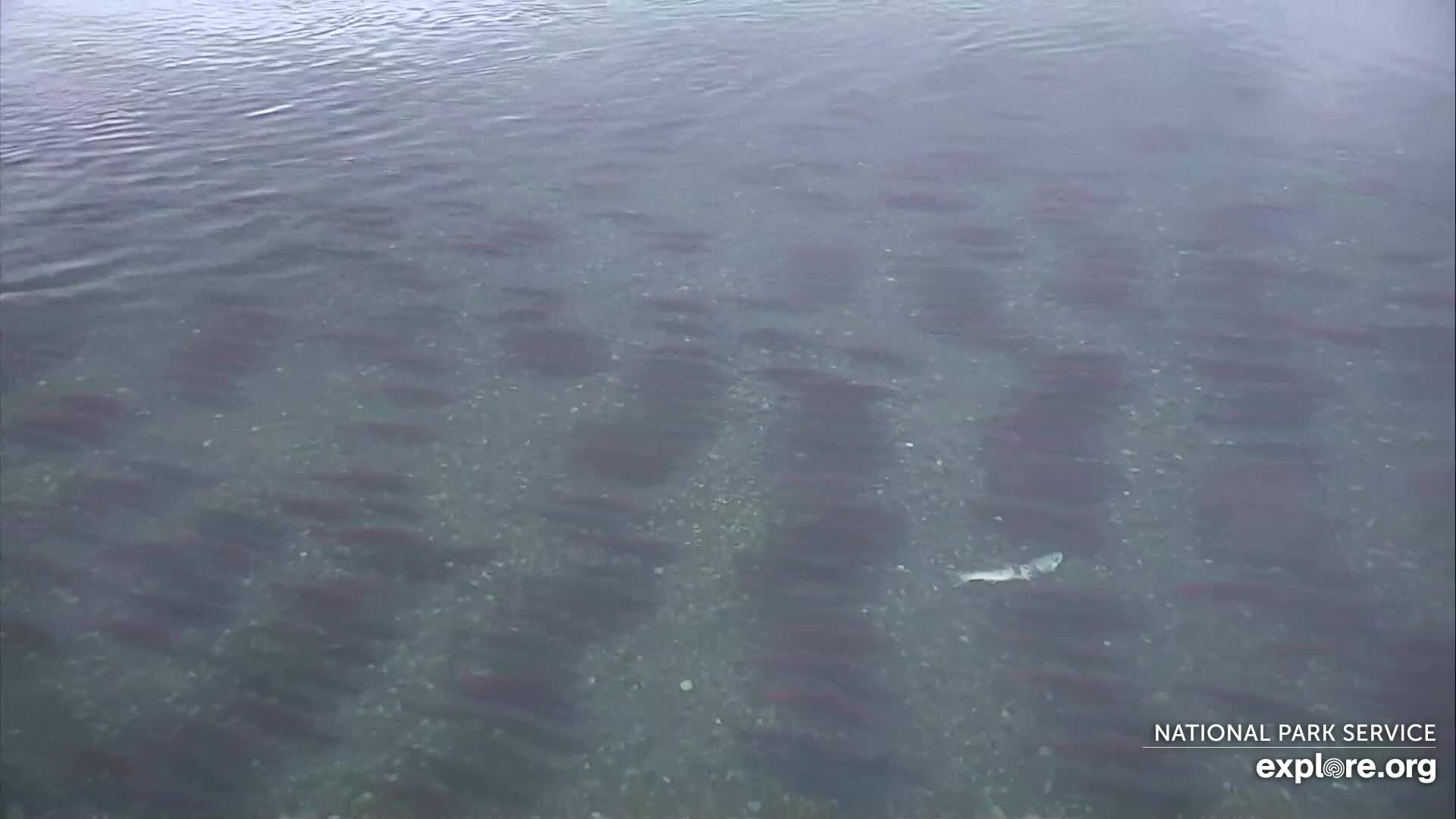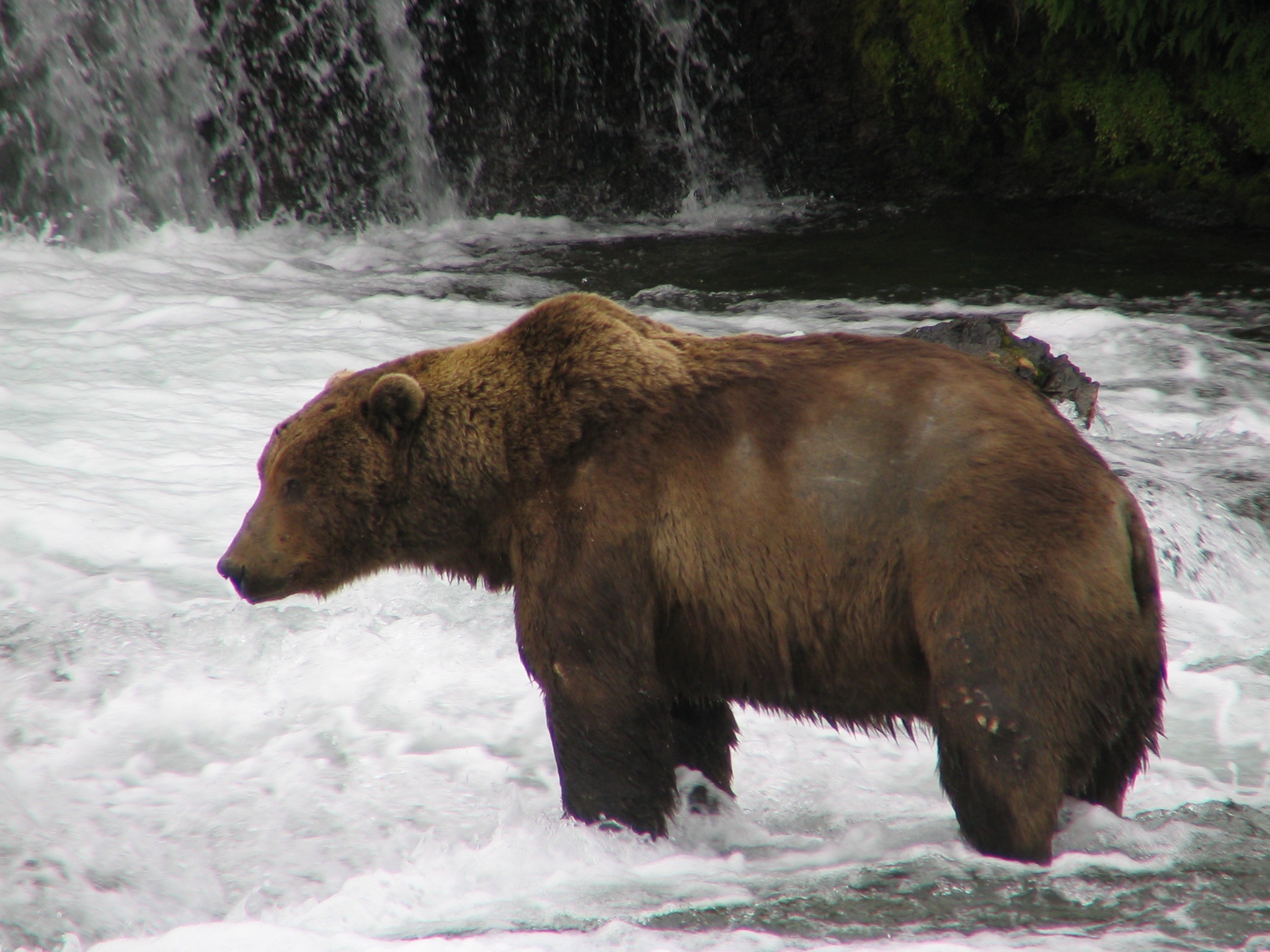As I’ve written before (here, here, and here) and commented on (here and here), Pebble Mine represents an unacceptable threat to Bristol Bay, home to the last great salmon run left on Earth. Through June 29, you can submit comments on the Army Corps of Engineers draft Pebble Mine environmental impact statement. I encourage everyone who cares about wildlife and wild places to comment. Tell the Army Corps of Engineers that this mine is unacceptable.
I also realize that not everyone has the time to read the draft EIS, which is huge, containing about 1,400 pages. So, I’ve copied my comments on the draft EIS verbatim below. You can also download a rich text file of the comments. I hope they inform your comments about Pebble Mine, the development of which would be a grievous mistake.

Draft Pebble Mine Environmental Impact Statement Comments
I firmly oppose the development of Pebble Mine. The draft EIS (DEIS) fails to adequately address the mine’s short-term and long-term impacts. Additionally, its development would create several permanent hazards to the watershed, and the mine merely represents the first of many potential large-scale developments that will continually degrade salmon habitat in Bristol Bay. After reviewing the DEIS, I urge the Army Corps of Engineers to reject the permit application for Pebble Mine and select the no action alternative.
Permanent Mine Hazards
The mine and its infrastructure create several permanent environmental hazards. Two of these hazards, the open pit lake and tailings storage areas, are particularly concerning, because the DEIS does not provide adequate or convincing information on how these hazards can be contained indefinitely. For example, page 8 of the executive summary states,
“Pyritic tailings and PAG waste rock would be placed into the open pit for long-term storage below the pit lake water level. Once the material has been transferred to the open pit, the pit lake (i.e., the water that would accumulate in the open pit as a lake at closure) would continue to fill, and would be allowed to rise to the pre-determined control elevation threshold (about 890 feet). Once the level of the open pit lake rises to the control elevation, water would be pumped from the open pit, treated as required to meet State water quality standards, and discharged to the environment.”
This final stage of the open pit requires indefinite water treatment and discharge of water from the open pit. This is neither acceptable nor feasible in perpetuity since treatment facilities must be funded and maintained forever. Even if Pebble Limited Partnership is required to establish a bond to fund treatment, government solvency cannot be guaranteed over time spans necessary to treat wastewater from the open pit. Additionally, if costs to treat wastewater exceed the money available in the bond, then the burden to prevent contamination to the watershed will fall to taxpayers.
Page 8 of the executive summary also states,
“The bulk TSF would be closed by grading its surface so that all drainage would be directed off the TSF, and then the tailings surface would be covered with soil and/or rock and possibly a geomembrane or other synthetic material. This would prevent water from ponding on the TSF surface, and is known as a dry closure. Once this surface runoff from the bulk TSF is demonstrated to meet water quality criteria, it would be directly discharged to the environment.”
Since geomembranes have only been in use for 30 to 40 years, we lack adequate information on how they perform over the time span (essentially forever) necessary to keep the bulk tailings storage facility dry and prevent groundwater from leaching in or out. Simply covering it with soil, rock, and a synthetic membrane only delays groundwater contamination. It will not prevent it. The impacts of a degraded geomembrane leading to groundwater contamination are reasonably foreseeable but are currently unevaluated in the DEIS. The EIS needs to evaluate the impacts and timeline of a degraded geomembrane, not just presume that it will protect groundwater forever. It won’t.
Importantly, it is also completely unethical for a private corporation to create permanent hazards of this type. The mine has the potential to become another superfund site. If the Corps is to evaluate whether this project is in the public’s best interest, then it cannot ethically allow the creation of these hazards.
Scope of DEIS
The DEIS repeatedly presents information on best-case scenarios or merely states that something is “expected to happen” in an ideal way. For example, page 39 of the executive summary states,
“Water extraction activities would be required to meet the requirements of the Alaska Department of Natural Resources for temporary water use authorizations, and the Alaska Department of Fish and Game (ADF&G) for fish habitat permits (if issued). The rate and volume of water withdrawals would be monitored at each source to ensure permit requirements are met (as per permit stipulations). Therefore, the magnitude of the impacts to surface water resources is generally expected to result in changes in water quantity likely within the limits of historic and seasonal variation. The duration of the impacts is likely to be the life of the road, and the geographic extent of the impacts is likely to be relatively close to the road.”
Page 41 of the executive summary states,
“Overall, downstream impacts from pit lake level management during post-closure would not be expected.”
For another example, page 43 of the executive summary states,
“Under Action Alternative 1, impacts to water quality would generally be limited to the mine site area, within the zone of contact water capture and treatment, with potential minor exceptions of temperature and turbidity effects. Potential effects of contact and runoff water during construction of downstream water and sediment quality would be minimized through treatment prior to discharge, and would be expected to be minor.”
Statements such as these presuppose nothing will go wrong, ever, not with water treatment, not with the tailings storage areas, not with the fuel or the natural gas pipeline, not with the water extraction sites along the road. It downplays potentially significant risks. The DEIS does not adequately evaluate cumulative, foreseeable, long-term impacts.
Problems maintaining water quality can be expected over the life of the mine and are likely to increase after the mine is decommissioned. The mine will result in a net loss of spawning and rearing areas for salmon, and the habitat cannot be reclaimed. Throughout the DIES, the text downplays the ultimate impacts of the project. To gloss over impacts to the watershed in this manner represents a lack of due diligence on the part of Army Corps of Engineers and Pebble Limited Partnership.
Potential for Catastrophic Mine Impacts
While a credible worst-case spill from the mine, such as a tailings dam failure, is not likely in 20 years, if it were to occur the environmental effects would be devastating. The DEIS, again, neglects to include the possibility of unlikely–but foreseeable–catastrophic events. The agency’s review does not analyze a full breach of the tailings dams. It instead looks at a much smaller partial breach suggesting, “Action Alternative 1 and variants would not be expected to result in a longterm change in the health of the commercial fisheries in Bristol Bay or Cook Inlet.” (DEIS Executive Summary, page 54)
The potential for a tailings dam failure might have been calculated to be small (DEIS K4.15-16) over the near term, for example, but the risk cannot be eliminated and it will increase over time without additional mitigation measures. What is the likelihood of dam failure (large or small) over the next several hundred years? How would a catastrophic tailings dam failure impact the watershed, salmon, other wildlife, and the people who rely on Bristol Bay? This must be evaluated in the EIS. It is a reasonably foreseeable impact for this type of development since tailings dams fail frequently in the United States.
Impacts to Fish and Wildlife
The DEIS does not adequately evaluate the direct or otherwise foreseeable impacts on waters accessible to anadromous fish. As an example,
“The magnitude and extent of impacts, when compared to the total mileage of currently documented anadromous waters in the three tributaries associated with the mine site (i.e., the NFK, SFK, and the UTC), the loss of Tributary 1.19 habitat would represent 4 percent and 3 percent of spawning and rearing habitat for coho salmon, respectively; and 3 percent of Chinook salmon rearing habitat in these tributaries. In the context of the entire Bristol Bay drainage, with its 9,816 miles of currently documented anadromous waters, the loss of Tributary 1.19 represents an 0.08 percent reduction of documented anadromous stream habitat.” (Executive Summary, pg. 49)
Fish populations fluctuate significantly over many years and Pacific salmon utilize different habitats during different life stages. Some places in a creek are good for spawning but not rearing, for example. These habitats do not necessarily occur along a stream’s entire distance, nor do streams support salmon at the same rates consistently. Productivity within a watershed can fluctuate greatly over annual and decadal scales. As recent research1 on the Nushagak watershed demonstrated, entire landscapes stabilize biological production. Patterns of high and low production shift among locations throughout time. Simply acknowledging a stream supports anadromous fish does not adequately acknowledge the complexity of salmon habitat. Subsequent chapters in the DEIS do not present information on the type and relative importance of the habitat that will be lost. Therefore, the DEIS’ conclusions may not reflect the true importance of the stream miles impacted by the mine.
The quoted text is also written in a manner that minimizes the mine’s impact on fish (“In the context of the entire Bristol Bay drainage…the loss of Tributary 1.19 represents an 0.08 percent reduction of documented anadromous stream habitat.”). A more ecologically accurate measure would be to calculate this statistic as a percentage of the North Fork Koktuli River watershed. As I note above, not all anadromous streams are created equal. The North Fork Koktuli River watershed likely supports unique stocks of anadromous fish. Sacrificing .08% of Bristol Bay is not inconsequential and should not be written in a manner that suggests as much.
Regarding the transportation corridor, each of the DEIS alternatives are flawed due to the lack of information on the infrastructure impacts on fish and wildlife. For example, the DEIS does not address whether shipping across Lake Iliamna will impact harbor seals. The seals who live in Lake Iliamna are a unique population2. They live their entire lives in freshwater and have never experienced consistent shipping traffic on the scale proposed. The DEIS, therefore, needs to evaluate the impacts of shipping on wildlife in Lake Iliamna.
Water Extraction
At the mine and along the proposed transportation corridor, dozens of “water extraction sites” are proposed, pumping hundreds of millions of gallons of combined from surface features such as ponds, lakes, and streams (DEIS 2-58, 2-59, 2-96, 2-111). The pumping will continue year-round for the lifespan of the mine, and potentially longer as long as the infrastructure exists. However, I was unable to locate information in the DEIS on the impact of water extraction. Text on water extraction cites Appendix K2, which only includes a table about the estimated extraction rate per year.
There is no analysis of the impact of removing 500-1000 gallons per minute from dozens of surface water features. Are the streams identified for water extraction included in Alaska’s anadromous fish catalog? How will each stream react to that level of water removal? Flow rates in Bristol Bay streams vary greatly across seasons. Can the proposed extraction rates be maintained during years of drought or during winter when flow rates are low with no significant impact on aquatic habitat?
Each water feature is hydrologically unique and should be evaluated separately. A lack of evaluation on water extraction on fisheries and wildlife is a major flaw in the DEIS.
Long-term infrastructure use by communities
The DEIS states in several places that mine infrastructure will improve the quality of life for some communities.
“As described in Section 4.12, Transportation and Navigation, Alternative 1 would result in the construction of roads and ports. Although the road and port would have limited access, PLP has stated that they would work with all local communities to identify the best solutions for controlled-access use of the road and ferry for community transportation. Communities adjacent to the natural gas pipeline (Kokhanok, Newhalen, and Iliamna) would have the opportunity to connect to the pipeline. During operations, PLP would work with local communities to identify safe, practicable ways for residents to use the access roads, such as scheduled, escorted convoys for private vehicle transport.” (4.4)
“Communities adjacent to the natural gas pipeline (Kokhanok, Newhalen, and Iliamna) would have the opportunity to connect to the pipeline. Natural gas would likely be less expensive than diesel heating oil, which could lower the cost of living once equipment (e.g., furnace, water heater) is converted to natural gas” (4.4-5)
However, the DEIS repeatedly states that infrastructure will be abandoned or removed after 20 years.
“If no longer required at closure, the pipeline would be cleaned and either abandoned in place or removed, subject to state and federal regulatory review and approval at the decommissioning stage of the project. Surface utilities associated with the pipeline would be removed and reclaimed.” (Executive Summary, pg. 13)
Due to the high cost of living in the area, communities along the infrastructure corridor are likely to use the access road and the natural gas pipeline as soon as they are permitted to do so. These same communities wouldn’t want to give it up that access after 20 years. Therefore, the likely impacts of a natural gas pipeline and roads are not limited to 20 years. Impacts extend indefinitely. The DEIS should be revised so that it evaluates the impacts of a potentially permanent pipeline and road corridor.
Potential for Larger Mine
The DEIS is a rough evaluation of a mine with a 20-year lifespan, but that is one of the least likely development scenarios. If Pebble Mine is permitted to be developed, then it will open the door for an expanded and much larger mine that will operate for nearly 80 years as well as several other large-scale mineral prospects. The DEIS acknowledges this on page 4.1-8 when it states the Pebble Project Expansion is “reasonably foreseeable” and “would develop an additional 58% of mineral deposits”. The impacts of a much larger Pebble mine and a mining district in the headwaters of Bristol Bay are potentially exponentially greater compared to the mine proposed in the DEIS. This will cause irreparable harm to Bristol Bay’s fishery.
The potential for an expanded mine also increases the likelihood that the Pebble’s supporting infrastructure will remain in place indefinitely. The infrastructure is unlikely to be reclaimed as outlined in the DEIS. It will be used to service not only the larger Pebble Mine but others as well. This will lead to a cumulative degradation of salmon habitat, greater impacts to other species of wildlife, and greater risk for Bristol Bay’s fishing industry and culture. Although it’s not possible for the DEIS to evaluate the impacts of all foreseeable project expansions and other mines, the likelihood of this should at least be acknowledged more prominently, ideally in the executive summary. As currently written it is buried in Chapter 4 and easy to overlook.
In support of the No Action Alternative
Large scale development, especially open-pit mining, is incompatible with salmon habitat. We know this because large scale development has significantly degraded salmon runs and salmon habitat across much of the North Pacific and North Atlantic. Bristol Bay harbors the last great salmon run on Earth. If Pebble Mine is developed, then we will have acknowledged we have learned nothing from the collapse of salmon runs in New England, California, Oregon, or Washington.
The DEIS is largely based on Pebble Limited Partnership’s data. With so many flaws in the DEIS, it’s clear that the applicant’s plan is inadequate and has not met the burden of information necessary to justify their plans.
The cheapest, most feasible, and most environmentally ethical decision is to conclude this mine poses unacceptable risks to Bristol Bay—specifically the Nushagak and Kvichak watersheds—reject the mine alternatives, and choose the no action alternative for the final EIS. This is well within the Corps’ legal authority: “No Action Alternative could be selected if USACE determines during its Public Interest Review (33 CFR Part 320.4[A]) that it is in the best interest of the public, based on an evaluation of the probable impacts of the proposed activity and its intended use on the public interest.” (Ch. 2-8)
Although modern society uses rare earth minerals like gold and copper in many ways, civilization will not collapse if Pebble Mine is not developed. We won’t even be inconvenienced. If developed though, Pebble Mine represents the beginning of the end of Bristol Bay’s salmon. Mining impacts won’t cease after 20 years, and the hazards cannot be mitigated in perpetuity. The infrastructure is a beachhead for a larger scale Pebble Mine as well as many others in the region. The cumulative impacts of each mine will result in the net loss of larger and larger percentages of available anadromous fish habitat. On no metric does the value ore at Pebble exceed the value a healthy Bristol Bay watershed, its tens of millions of spawning salmon, and the economy and culture based on it.
There is no doubt the no action alternative is in the best interest to the public. We have so little to lose by leaving the ore at Pebble Mine in the ground and so much to gain by protecting it for current and future generations. The decision is clear.
The only acceptable alternative proposed in the DEIS is the no-action alternative. Do not permit this mine to be developed. If you do, it will become one of the greatest environmental tragedies of the 21st century, representative of our failure to do what is right by the land, the fish, and the people of Bristol Bay. It will become a monument to human greed and hubris.
Sincerely,
Michael Fitz
Concrete, WA
May 24, 2019
- Brennan, S. R., et al. Shifting habitat mosaics and fish production across river basins. Science. Vol. 364. Issue 6442. 24 May 2019
- Brennan, S. R., et al. Isotopes in teeth and a cryptic population of coastal freshwater seals. Conservation Biology. Accepted Author Manuscript. 2019. https://doi.org/10.1111/cobi.13303


